Silvermine
New Member
Hello everyone,
I hope this is the correct subforum for this thread. As stated in the title, I'm not the primary carer for this chameleon, but I am very much concerned about his welfare and happiness. This chameleon lives in his terrarium in my office space. I help with his welfare and sometimes interact with him, but I feel very uncomfortable with this situation so I tend to keep my distance.
I will first answer the list of required information for help requests and then provide some additional context that I deem relevant. Two people are responsible for and invested in his care, so the answers relate to his overall care, not my contributions specifically. Apologies in advance for any wrong or confusing details, I have no experience with reptiles beyond a general idea of what (all) animals need to thrive. Some information may also be wrong as I haven't asked some of these questions explicitly and are based off of my observations.
Chameleon Info:
Cage Info:
Some other relevant information is that he was bought at a reptile fair from a breeder, and that (in my opinion) the level of interaction and involvement by the people responsible for his care is quite low. There is another plant in the office on the windowsill, so when it's sunny or he seems very agitated, someone will take him out of the cage and moved to that plant so he can bask or relax a bit. The office room is very tall and quite large, and he can climb quite quickly, so (maybe understandably) he is kept in the cage most of the day. It was implied above, but I feel I should re-state the fact that the chameleon is left completely alone in his cage for dozens of 24-hour periods per year (most weekends and many holidays). No matter what species the pet is, this seems to me to indicate a lack of effort and interest in the animal's wellbeing.
I want to raise this issue with the chameleon's carers, but given that I lack experience and knowledge, I thought I should find a digital space where I could get some expert opinions regarding this specific case so that I am more informed before saying anything. I will of course also consult with vets that specialise in exotic pets/reptiles.
I have attached some photos; I've blacked out anything visible that is outside/surrounding the cage for privacy reasons. As I previously mentioned, I know nothing about keeping reptiles as pets, and have never had one myself. I've done some basic research to get better informed regarding this situation, and at this point my opinion is that the bare minimum is being done to keep the chameleon alive and functioning, but there seems to be a lot of things that are severely lacking in the care provided to this reptile. As someone that believes all animals under human care should be treated with respect and deserve a happy and full life, I find the bare minimum completely unacceptable. Would this be a fair assessment, or am I exaggerating?
EDIT: Improved some answers and fixed some typos.
I hope this is the correct subforum for this thread. As stated in the title, I'm not the primary carer for this chameleon, but I am very much concerned about his welfare and happiness. This chameleon lives in his terrarium in my office space. I help with his welfare and sometimes interact with him, but I feel very uncomfortable with this situation so I tend to keep my distance.
I will first answer the list of required information for help requests and then provide some additional context that I deem relevant. Two people are responsible for and invested in his care, so the answers relate to his overall care, not my contributions specifically. Apologies in advance for any wrong or confusing details, I have no experience with reptiles beyond a general idea of what (all) animals need to thrive. Some information may also be wrong as I haven't asked some of these questions explicitly and are based off of my observations.
Chameleon Info:
- Your Chameleon- The species, sex, and age of your chameleon. How long has it been in your care?
- Veiled chameleon, male, unknown. He was quite small when he was brought here approx. 18 months ago.
- Handling- How often do you handle your chameleon?
- On average probably less than once a day, given that he is left alone in the weekends.
- Feeding- What are you feeding your cham? What amount? What is the schedule? How are you gut-loading your feeders?
- He is fed live crickets, as far as I know the amount is only estimated and the schedule seems quite random. I don't know if the crickets are gut-loaded. He finds catching crickets difficult, so he is sometimes fed by placing a few crickets in a cup/mug so that he can easily bite and eat them.
- Supplements- What brand and type of calcium and vitamin products are you dusting your feeders with and what is the schedule?
- Unknown, I would guess no additional nutrients are provided.
- Watering- What kind of watering technique do you use? How often and how long to you mist? Do you see your chameleon drinking?
- There is a smal water "bowl" in the cage. I haven't really noticed chameleon drinking, but that may also just be because I don't typically face that side of the room when working.
- Fecal Description- Briefly note colors and consistency from recent droppings. Has this chameleon ever been tested for parasites?
- I have tried to observe his faeces but I haven't been able to identify any very recent droppings. He has never been to the vet to my knowledge.
- History- Any previous information about your cham that might be useful to others when trying to help you.
- As you can see from the photos, he has an abrasion on his bottom lip that to me looks like a healed burn.
Cage Info:
- Cage Type- Describe your cage (Glass, Screen, Combo?) What are the dimensions?
- Glass with a rocky backdrop. 75cm tall, 50cm wide, 50cm deep. Before this, he was living in a much smaller cage (probably 1/6th the volume of the new one) for 6+ months.
- Lighting- What brand, model, and types of lighting are you using? What is your daily lighting schedule?
- Two lightbulbs, one is a Reptile UVB150, the other unknown. They are on constantly, and turn off automatically (based on what is shown on the timer, from 20:00 to 06:00).
- Temperature- What temp range have you created (cage floor to basking spot)? Lowest overnight temp? How do you measure these temps?
- Temperature is not measured, there is no meter installed. I would guess the temperatures typically don't drop terribly low as the room is quite well insulated. In the winter the heating is turned off however, and outside temperatures drop below 0C often.
- Humidity- What are your humidity levels? How are you creating and maintaining these levels? What do you use to measure humidity?
- Humidity is likewise not measured as far as I know. A spray bottle is used to increase humidity. I feel that this is also done randomly, and is done for a few minutes when the terrarium seems dry (or before the weekend/holidays).
- Plants- Are you using live plants? If so, what kind?
- There are live plants in the cage, unfortunately I don't know the species. I hope they're discernible from the photos.
- Placement- Where is your cage located? Is it near any fans, air vents, or high traffic areas? At what height is the top of the cage relative to your room floor?
- The terrarium is on an office desk on a wooden surface. It is in a relatively calm location, close to two large windows that face west. The top of the cage is around 1.5m above the floor.
- Location- Where are you geographically located?
- Central Europe.
Some other relevant information is that he was bought at a reptile fair from a breeder, and that (in my opinion) the level of interaction and involvement by the people responsible for his care is quite low. There is another plant in the office on the windowsill, so when it's sunny or he seems very agitated, someone will take him out of the cage and moved to that plant so he can bask or relax a bit. The office room is very tall and quite large, and he can climb quite quickly, so (maybe understandably) he is kept in the cage most of the day. It was implied above, but I feel I should re-state the fact that the chameleon is left completely alone in his cage for dozens of 24-hour periods per year (most weekends and many holidays). No matter what species the pet is, this seems to me to indicate a lack of effort and interest in the animal's wellbeing.
I want to raise this issue with the chameleon's carers, but given that I lack experience and knowledge, I thought I should find a digital space where I could get some expert opinions regarding this specific case so that I am more informed before saying anything. I will of course also consult with vets that specialise in exotic pets/reptiles.
I have attached some photos; I've blacked out anything visible that is outside/surrounding the cage for privacy reasons. As I previously mentioned, I know nothing about keeping reptiles as pets, and have never had one myself. I've done some basic research to get better informed regarding this situation, and at this point my opinion is that the bare minimum is being done to keep the chameleon alive and functioning, but there seems to be a lot of things that are severely lacking in the care provided to this reptile. As someone that believes all animals under human care should be treated with respect and deserve a happy and full life, I find the bare minimum completely unacceptable. Would this be a fair assessment, or am I exaggerating?
EDIT: Improved some answers and fixed some typos.
Attachments
-
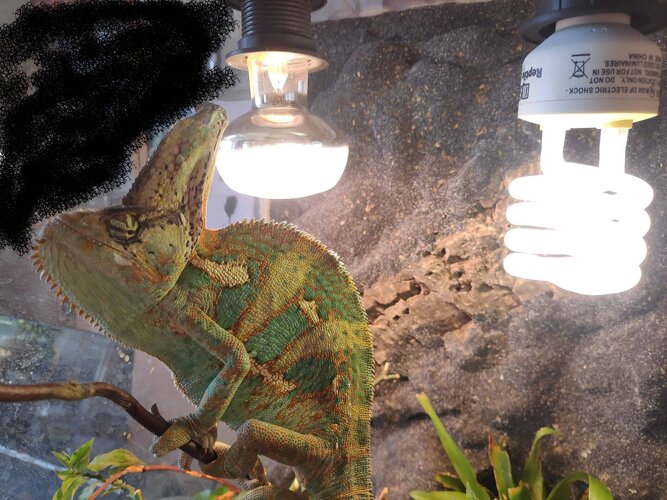 1685369194499.jpg327.5 KB · Views: 64
1685369194499.jpg327.5 KB · Views: 64 -
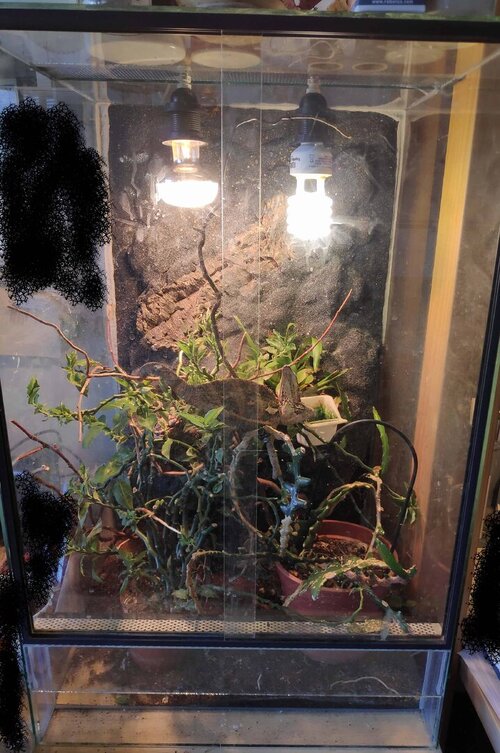 1685369194856.jpg189.1 KB · Views: 62
1685369194856.jpg189.1 KB · Views: 62 -
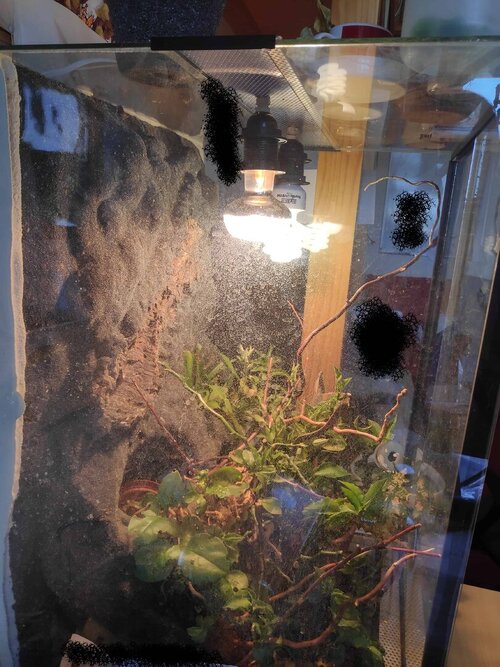 1685369194800.jpg215.2 KB · Views: 69
1685369194800.jpg215.2 KB · Views: 69 -
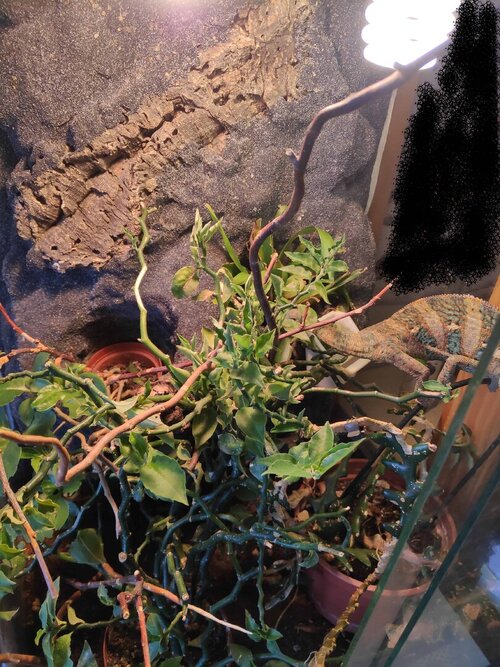 1685369194741.jpg269.2 KB · Views: 69
1685369194741.jpg269.2 KB · Views: 69 -
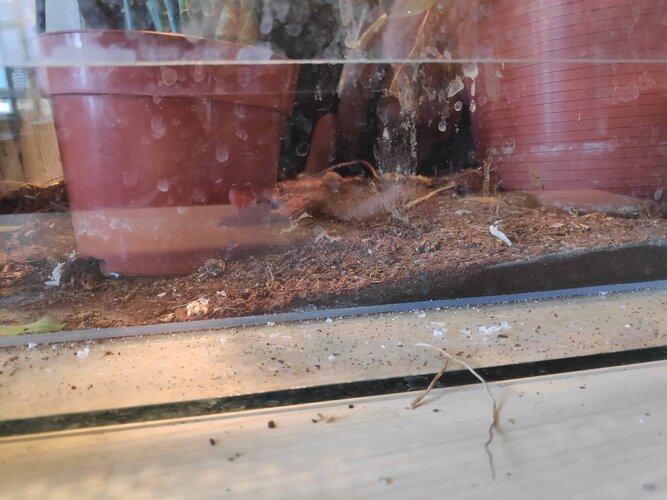 1685369194698.jpg226.2 KB · Views: 69
1685369194698.jpg226.2 KB · Views: 69 -
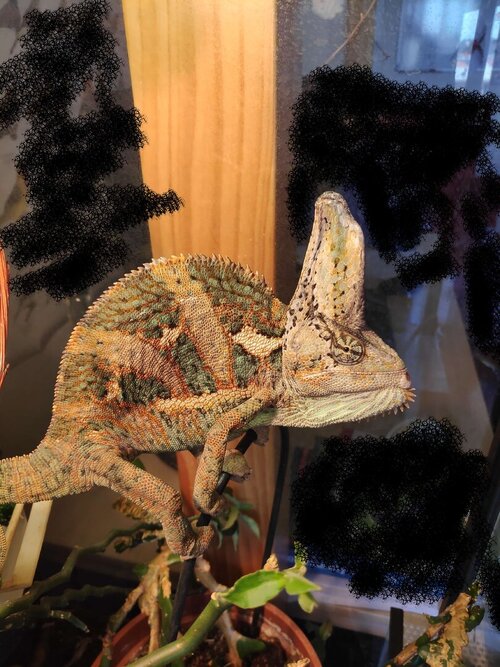 1685369194648.jpg220.7 KB · Views: 66
1685369194648.jpg220.7 KB · Views: 66 -
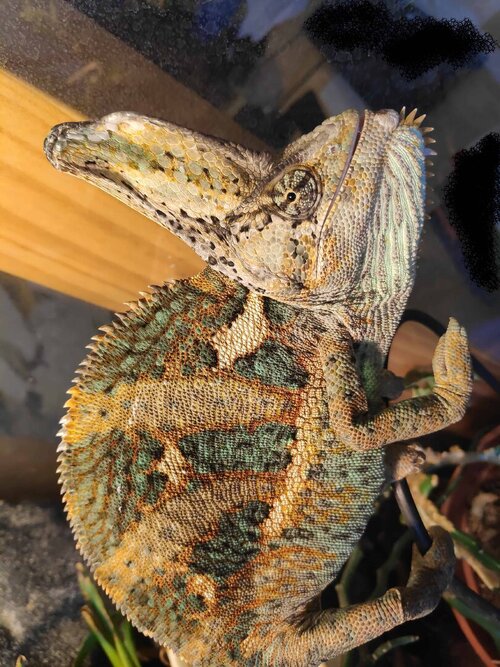 1685369194587.jpg250.3 KB · Views: 63
1685369194587.jpg250.3 KB · Views: 63 -
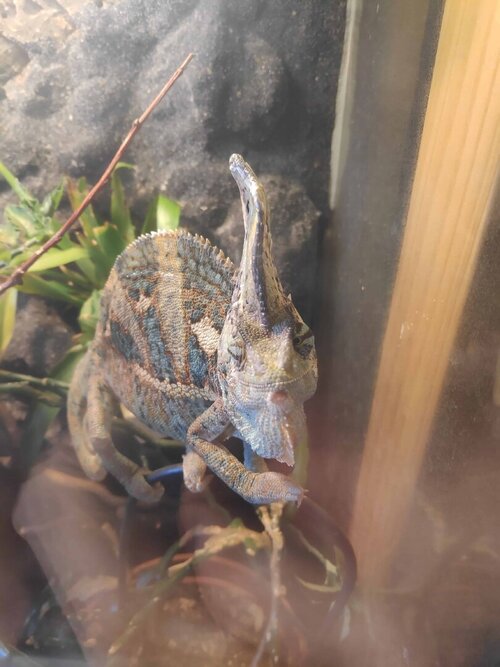 1685369194544.jpg118.2 KB · Views: 70
1685369194544.jpg118.2 KB · Views: 70
Last edited:







